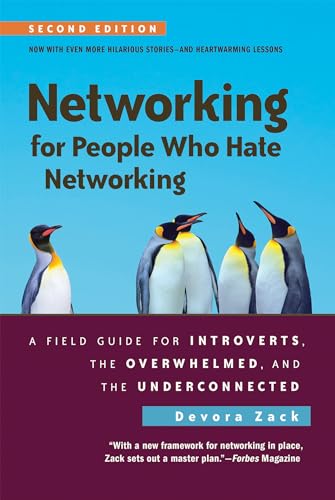As an Amazon Associate, we earn from qualifying purchases. Some links may be affiliate links at no extra cost to you. Although our opinions are based on curated research, we haven't used these products. Articles generated with AI.

5 Best Political Networking Strategies to Expand Your Influence and Connections
To expand your political influence and connections, focus on these five strategies:
- Set Clear Networking Goals: Define your objectives, like securing mentorship or discussing policy.
- Attend Targeted Events: Choose events with themes that resonate with you and attract key influencers.
- Leverage Social Media: Engage with political thought leaders online for broader visibility.
- Follow Up: Connect post-event to deepen relationships within 24-48 hours.
- Engage Your Audience: Understand their interests for authentic interactions.
Don’t miss out on powerful insights to enhance your connections!
Key Takeaways
- Choose relevant political events aligned with your interests to connect with like-minded individuals and key influencers.
- Identify and follow key influencers in your field to engage and gain insights from their expertise and network.
- Set clear networking goals, such as seeking mentorship, to create focused and effective connections in the political landscape.
- Engage your audience through active listening, open-ended questions, and tailored communication styles for deeper relationships.
- Follow up promptly and thoughtfully with new contacts to maintain relationships and uncover future opportunities.
Networking for People Who Hate Networking, Second Edition
Sale
Networking for People Who Hate Networking, Second Edition: A Field Guide for Introverts, the...
- Zack, Devora (Author)
- English (Publication Language)
- 208 Pages - 05/21/2019 (Publication Date) - Berrett-Koehler Publishers (Publisher)
“Networking for People Who Hate Networking, Second Edition” by Devora Zack is a must-read for anyone feeling uneasy about networking. As an introvert, you might appreciate how Zack emphasizes introverted traits as strengths. The book outlines practical strategies tailored for you, helping you connect authentically.
- Transformative Insights: Many readers highlight newfound self-acceptance through her insights.
- Engaging Style: Humor and clarity make it accessible for all.
- Online Networking Tips: Effective for today’s digital landscape.
While some critiques mention a focus on personality types and confusing language, the core message remains empowering. Try applying these tips to expand your connections!
Best For: Individuals, especially introverts, who are seeking effective networking strategies while feeling overwhelmed in social situations.
Pros:
- Transformative Insights: Offers a new perspective on introverted traits, turning them into strengths for networking.
- Engaging Style: Combines humor and clarity, making the content enjoyable and accessible for a wide audience.
- Online Networking Tips: Provides practical advice relevant to today’s digital networking landscape.
Cons:
- Focus on Personality Types: Some readers feel there is too much emphasis on personality insights rather than actionable networking techniques.
- Confusing Language: A portion of the text is criticized for being difficult to understand, detracting from the overall message.
- Lengthy Content: Some believe the book could be more concise, as certain sections may feel superfluous.
Introduction to Networking: How the Internet Works
Introduction to Networking: How the Internet Works
- Severance, Dr. Charles R (Author)
- English (Publication Language)
- 122 Pages - 05/29/2015 (Publication Date) - CreateSpace Independent Publishing Platform (Publisher)
Accessible language and large print for easy reading can help you grasp essential networking concepts. Dr. Charles Severance’s book serves as a friendly introduction to how the internet functions. It offers:
- Digestible chapters: Each chapter breaks complex ideas into simple segments.
- Recaps and quizzes: End-of-chapter recaps reinforce your understanding.
While it covers the TCP model, the OSI model remains crucial for current networking standards. You’ll find the book ideal if you’re new to the subject, perhaps even prepping for certifications like CompTIA Network+. Remember, deeper insights may require further reading, but this text lays a solid foundation.
Best For: Individuals with little to no knowledge of networking looking for a clear, introductory resource to understand internet concepts.
Pros:
- Easy to read with large print and simplified language aiding comprehension.
- Digestible chapters help break down complex networking ideas into manageable segments.
- Recaps and quizzes at the end of chapters reinforce understanding and gauge progress.
Cons:
- Lacks technical depth and practical examples suitable for advanced learning.
- The physical quality of the paperback is noted as low, with a glassy cover and nonstandard page sizes.
- Some users have reported issues with the Kindle version, specifically missing images.
Wireless Networking in the Developing World: Black and White Version
Wireless Networking in the Developing World: Black and White Version
- Authors, Wireless Networking (Author)
- English (Publication Language)
- 524 Pages - 04/11/2013 (Publication Date) - CreateSpace Independent Publishing Platform (Publisher)
In regions where traditional connectivity methods often fall short, “Wireless Networking in the Developing World” serves as an essential resource for network managers and technical administrators looking to establish affordable yet efficient wireless systems.
Key Features:
- Open-Access Guide: This book offers practical advice on designing, implementing, and maintaining low-cost wireless networks.
- Audience: Ideal for those with a moderate to advanced understanding of networking.
- Technical Insights: It breaks down complex topics, clarifying the essentials of Wi-Fi technology and its functionality.
- Mesh Networks: It includes practical applications for modern networking solutions, suitable for campuses and offices.
Take advantage of this valuable resource to enhance your networking capabilities!
Best For: This guide is best for network managers and technical administrators in developing countries seeking to implement low-cost wireless networks.
Pros:
- Open-access resource providing practical insights into wireless networking design and maintenance.
- Comprehensive content that clarifies complex topics, making it easier to understand Wi-Fi technology.
- Relevance to modern solutions like mesh networks, offering applicable strategies for effective implementation.
Cons:
- May be overwhelming for beginners due to its moderate to advanced level of technical detail.
- Limited hands-on examples or case studies for practical application may hinder immediate implementation.
- Focus on specific regions may not fully address universal networking challenges.
Networking Made Easy: Get Yourself Connected (Computers Made Easy)
Networking Made Easy: Get Yourself Connected (Computers Made Easy)
- Bernstein, James (Author)
- English (Publication Language)
- 149 Pages - 09/02/2018 (Publication Date) - Independently published (Publisher)
Easy-to-Understand Language: The straightforward writing makes concepts digestible. “Networking Made Easy” is your go-to guide for creating basic Windows networks, ideal for home or small offices. You don’t need a tech background—just some familiarity with programs like Word and Excel.
Key Features:
- Target Audience: Perfect for entry-level users wanting to plunge into networking.
- Content: Covers essential topics like DNS and routers in practical terms.
Many readers find its simplicity invigorating. You’ll grasp networking fundamentals without wading through complex jargon. If you’re looking to understand and expand your networking skills, this book is a solid choice.
Best For: Individuals with basic computer knowledge who want to learn about creating small Windows networks for home or modest office use.
Pros:
- Straightforward Language: The book presents networking concepts in a clear and easy-to-understand manner, making it approachable for beginners.
- Practical Focus: It covers essential networking topics like DNS and routers, ensuring readers gain foundational knowledge applicable to real-world scenarios.
- Engaging Style: Many readers find the writing engaging, making the learning experience enjoyable compared to other technical literature.
Cons:
- Limited Depth: The book doesn’t delve into complex networking concepts or professional setups, which may leave advanced users wanting more.
- Not for Professionals: It may not cater to individuals seeking detailed technical information or pursuing a career in networking.
- Basic Content: Readers looking for in-depth technical details may find the coverage too simplistic for their needs.
Networking All-in-One for Dummies
Sale
Networking All-in-One for Dummies
- Lowe, Doug (Author)
- English (Publication Language)
- 948 Pages - 04/27/2021 (Publication Date) - For Dummies (Publisher)
- Key Features:
- Covers fundamental networking concepts, particularly for Windows.
- Accessible writing style simplifies complex topics.
- Excellent as a reference for different expertise levels, especially those brushing up on skills.
Many readers find it useful for preparing for certifications as well, making it a worthwhile investment for expanding your networking knowledge.
Best For: Beginners and individuals looking to enhance their understanding of networking, particularly within Windows environments.
Pros:
- Comprehensive coverage of fundamental networking concepts, catering to both newbies and experienced users.
- Engaging writing style that makes complex topics easier to grasp.
- Serves as a valuable reference guide for those preparing for networking certifications.
Cons:
- Some chapters may be too advanced for readers only interested in basic home networking.
- Better suited as a reference book rather than a front-to-back read.
- Occasional minor issues reported regarding the condition of the book upon delivery.
Factors to Consider When Choosing Political Networking

When you’re choosing political networking opportunities, it’s crucial to pinpoint your networking goals and objectives. Think about what you want to achieve—whether it’s gaining knowledge, building alliances, or influencing policy changes. By selecting relevant events and identifying key influencers in your area, you can tailor your approach to effectively engage with your audience and maximize your impact.
Networking Goals and Objectives
Next, set specific objectives like securing mentorship from seasoned political figures. Assess your skills, like improving communication techniques or understanding legislative processes. This enhances your effectiveness.
Align your personal values with potential contacts to foster authentic connections. Additionally, evaluate how your networking could influence your long-term career or advocacy goals. By prioritizing these relationships, you’re not just expanding your network; you’re strategically positioning yourself for future success in politics.
Choose Relevant Events
Choosing the right political networking events is essential for advancing your career or advocacy goals. Here’s what to take into account:
- Event Alignment: Verify the theme matches your interests for meaningful connections.
- Influencer Presence: Seek events with key influencers and decision-makers. Their insights can open doors.
- Format Matters: Decide whether you prefer panel discussions, workshops, or casual meet-and-greets. Some formats encourage easier interaction.
- Attendee Demographics: Research who’s attending. Engaging with like-minded individuals can amplify your agenda.
- Participation Opportunities: Look for chances to speak or participate in panels. This increases your visibility and credibility in the field.
Identify Key Influencers
Identifying key influencers is essential in political networking—so how do you spot them effectively?
1. Seek Out Significant Roles****
Look for individuals in major positions like party leaders, elected officials, and lobbyists. These people can shape opinions and decisions.
2. Connect with Community Leaders****
Engage with local activists and leaders who have a knack for mobilizing grassroots support.
3. Identify Thought Leaders****
Recognize experts in policy areas that align with your interests. Their insights can amplify your message.
4. Attend Events
Participate in political forums, town halls, and networking events where these influencers gather.
5. Utilize Social Media****
Follow and interact with key influencers online, paving the way for valuable real-world connections.
Understand Your Audience
Understanding your audience is a fundamental step in effective political networking. To connect meaningfully, identify their interests, values, and motivations. Research demographic details like age, profession, and political affiliation—knowing that 60% of people align with their workplace views helps tailor your approach.
Engage through active listening and ask open-ended questions, fostering deeper connections. For example, in discussions about climate change, inquire about local impacts to spark relevant dialogue.
Utilize social media analytics to spot trending topics and sentiments. This data enables you to address current concerns directly. Additionally, recognize different communication styles—some prefer direct conversation, while others appreciate a more casual tone. By understanding these factors, you’ll enhance your networking success in political contexts.
Tailor Your Approach
Taking the time to customize your approach makes networking more effective and can foster meaningful connections that support your political objectives. Start by understanding the political landscape and identifying key players involved. This allows you to align your message with their interests and priorities.
- Common Values: Pinpoint shared values that resonate with your goals. This strategy helps establish authentic connections.
- Communication Style: Adjusting your communication style is essential. Use language that reflects your audience’s concerns.
- Engagement Opportunities: Attend political events tailored to your target audience for direct interaction.
Leverage Social Media
Utilizing these platforms enables you to communicate in real-time, responding to emerging issues promptly. You can also use analytics tools to track engagement metrics, helping you understand your audience better. Additionally, targeted advertising allows you to reach specific demographics based on location, interests, and behaviors. This strategic approach can greatly boost your political influence and foster meaningful connections.
Build Authentic Connections
When you prioritize genuine engagement over transactional interactions, you’re setting the foundation for lasting political relationships. To build these connections, focus on active listening; it shows you respect others’ viewpoints, fostering impactful dialogue. Share your personal stories to create relatability—this approach makes you more approachable.
Consider these strategies:
- Participate in Community Events: Engage in local forums to meet like-minded individuals who share your political passions.
- Foster Trust: Authentic connections thrive on trust; show sincerity in your interests.
- Regular Engagement: Strengthen relationships by consistently communicating your commitment.
Follow-Up Strategies
Multiple Channels: Keep in mind that using a mix of tools—like email, social media, or even handwritten notes—can guarantee your message reaches the recipient in their preferred format. Following up promptly, ideally within 24 to 48 hours, greatly boosts your chances of establishing a lasting connection. Tailor your messages to reference specific topics discussed; this shows attentiveness and solidifies ties.
Key Considerations:
- Be concise. Long messages may be overlooked.
- Regular check-ins, even without an agenda, maintain relationships and can yield unexpected opportunities.
Utilizing these follow-up strategies not only enhances visibility but strengthens your influence in the political landscape. Prioritize thoughtful, timely communication to make your networking endeavors truly effective.
Frequently Asked Questions
How Can I Network Effectively in a Virtual Environment?
To network effectively in a virtual environment, you need to be strategic. Start by attending online events like webinars and panel discussions. Engage with speakers and participants in the chat. Use LinkedIn to connect with industry professionals. Personalize your connection requests and follow up with a message. Consider joining online groups and forums related to your interests. Finally, don’t forget to regularly share valuable content to keep your network engaged and informed.
What Role Does Social Media Play in Political Networking?
Social media acts as a bridge, connecting you to a vast network of opportunities. It’s where you can:
- Share insights on policies.
- Engage with followers, fostering discussions.
- Showcase your initiatives and expertise.
In 2022, 72% of voters reported using social media for political information. Utilize platforms like Twitter or LinkedIn to amplify your voice. Your online presence can shape opinions and build valuable connections effectively.
How Do I Follow up After a Political Networking Event?
To effectively follow up after a political networking event, try these steps:
- Send a thank-you email: Mention specific conversations to strengthen your connection.
- Connect on social media: Consider platforms like LinkedIn for professional ties.
- Schedule a follow-up call: This can deepen your relationship.
Research shows that personalized follow-ups can increase your networking success by 70%. Keep it concise but warm, and don’t hesitate to reach out again!
What Are Some Common Networking Mistakes to Avoid?
Don’t worry, you’re not alone in stumbling through networking! Many people forget essential steps. Here are key pitfalls to dodge:
- Ignoring follow-ups: *46% of people* never follow up. Don’t be one of them.
- Over-talking: Remember, it’s a conversation, not a monologue.
- Being unprepared: Research attendees beforehand to make meaningful connections.
Avoid these missteps and you’ll greatly enhance your networking effectiveness! After all, *who doesn’t want more connections?*
How Can Introverts Succeed in Political Networking Situations?
You can thrive in political networking situations by leveraging your unique strengths. Focus on building one-on-one connections, as introverts often excel in deep conversations. Prepare talking points to ease anxiety, and listen actively—research shows that effective listening builds rapport. Consider smaller events, which can feel less overwhelming. Practice makes perfect, too; gradually engage in larger groups. Remember, authentic interactions are key. Your thoughtful approach will impress and expand your network considerably.











